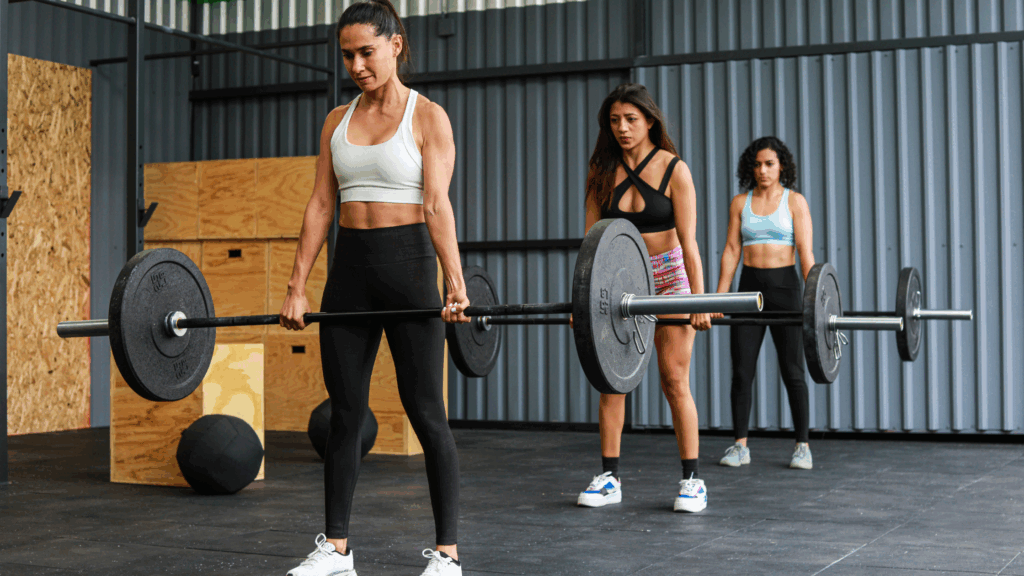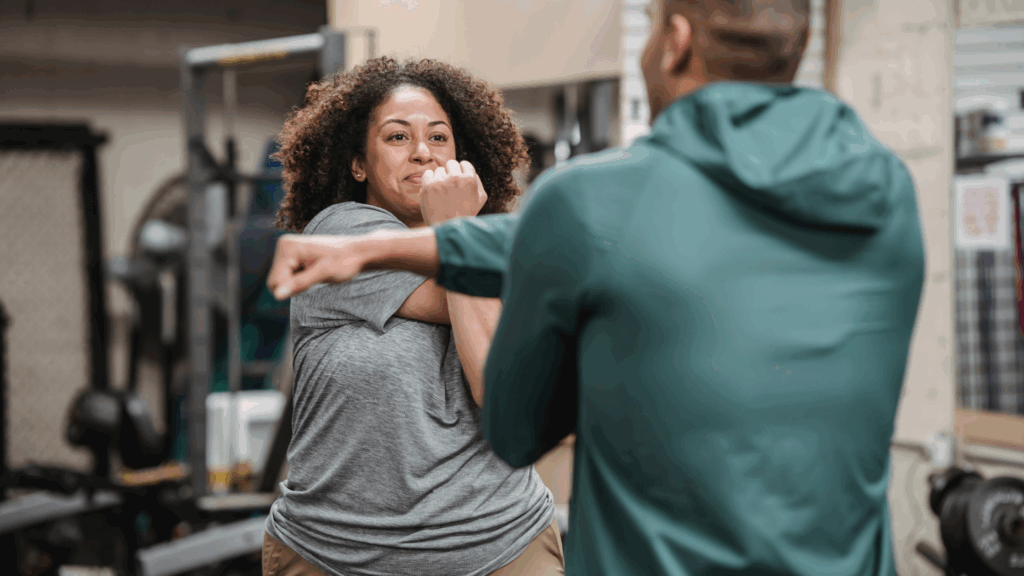Do you often find yourself with an achy elbow after an intense lifting or training session at the gym?
You are not alone.
Elbow joint pain from lifting weights is a common issue among strength and conditioning athletes, as well as everyday gym-goers.
It can limit your progress, make training frustrating, and even impact your daily life.
Whether you are chasing a new personal best, building muscle, or simply staying fit, it’s important to understand what your elbow is trying to tell you – and what you can do about it.
With the correct technique, recovery strategies, and injury prevention methods, you can keep your elbows strong and pain-free while lifting.
Understanding elbow joint pain
The elbow is a hinge joint made up of the upper arm bone and the two bones of the forearm.
It is supported by muscles, tendons, and ligaments that control the movements of the elbow, wrist, and hand.
All of these structures can be stressed during weight training and CrossFit workouts.
Repetitive movements, poor technique, or poor load management can irritate or damage the tissues around the joint – especially if you are not allowing enough recovery before returning to the gym.
Elbow pain can develop gradually due to:
- Repetitive strain
- Strength or mobility imbalances in the upper limb
- Overtraining without adequate rest

Common causes of elbow joint pain from lifting weights and CrossFit
Tendinopathy
Conditions such as tennis elbow (lateral epicondylitis) and golfer’s elbow (medial epicondylitis) are common among weightlifters and CrossFit athletes due to the high demands of Olympic lifts, gymnastics movements, and repetitive gripping.
These conditions involve pain or structural changes in the tendons attaching at the elbow joint.
Joint overload
CrossFit often involves high-repetition, high-load exercises.
Without gradual progression, this can place excessive strain on the elbow.
Muscle or mobility imbalances
Weak or unstable shoulders can create a chain reaction affecting the elbow.
Limited mobility in the shoulder, neck, or wrist can also force compensatory movements, leading to elbow pain.
More on tendinopathy
Unlike muscle strains or fractures, a tendinopathy does not typically improve with rest alone.
Completely avoiding activity can even delay recovery.
Tendons recover best with controlled loading.
The key is to identify how much load the tendon can tolerate without pain, then gradually increase it.
Effective management includes:
- Finding a safe starting load
- Gradually increasing load and volume
- Incorporating exercise rehabilitation and manual therapy
- Adjusting training for weightlifting and CrossFit to protect the tendon

Signs you may be overloading your elbows
While muscle soreness is normal after training, persistent elbow symptoms should not be ignored.
Watch for:
- Dull or sharp ache on the inside or outside of the elbow
- Pain during or after grip-dominant or pulling exercises (e.g. pull-ups, snatches, kettlebell swings)
- Stiffness or reduced range of motion
- Swelling or tenderness around the joint
- Weakness when gripping or lifting
- Pain that persists beyond the gym and affects daily life
If these symptoms sound familiar, it may be time to seek physiotherapy advice.
How physiotherapy can help elbow pain
At Lifecare, our multidisciplinary team – including physiotherapists, exercise physiologists, and myotherapists/remedial massage therapists – work together to treat and prevent gym-related elbow pain.
A tailored treatment plan may include:
Comprehensive assessment
Identifying the root cause of the problem – whether due to mobility, strength, training changes, or lifting technique.
Load management education
Adjusting training to allow healing while maintaining progress.
This might involve reducing weight, altering the range of motion, or substituting exercises.
Manual therapy
Hands-on techniques to improve muscle tightness, joint mobility, and reduce pain.
Exercise rehabilitation
Individualised strength and mobility programmes to address imbalances or poor movement patterns.
Recovery strategies
Soft tissue treatments, myotherapy, and self-care techniques (such as trigger ball use) to maintain tissue health and prevent flare-ups.

Preventing elbow joint pain in the gym
Prevention is always better than cure.
Protect your elbows by following these principles:
- Progress gradually: Increase load and volume slowly to allow muscles and tendons time to adapt.
- Warm up: Include mobility work and light activation drills before lifting.
- Train smart: Vary grips and exercise selection to avoid overuse.
- Check your form: Prioritise quality movement over quantity. Use mirrors, video feedback, or coaching.
- Balance training: Combine pulling and pressing movements for balanced strength.
- Listen to your body: Persistent or patterned pain should be addressed early.
Invest in your health
A timely diagnosis and the right treatment plan can get you back to lifting, training, and moving without pain.
If you are struggling with elbow joint pain from lifting weights or want to learn how to train smarter, contact your nearest Lifecare clinic today. Our team is here to help you keep doing what you love for as long as possible.
Written by Daisy McDonald, Physiotherapist – Langwarrin Sports Medicine Centre
With a Bachelor of Physiotherapy (Honours), Daisy combines clinical expertise with a passion for patient education, equipping individuals with the knowledge and tools they need to return to optimal function. As a CrossFit athlete, Daisy understands the demands of training and is passionate about helping people return to the gym healthy, regardless of the injury.

